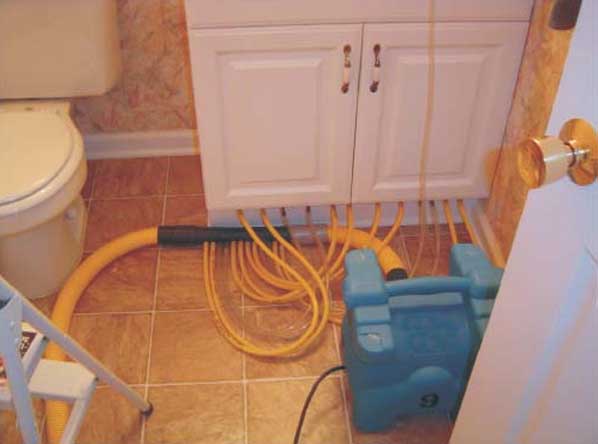No matter where in the house you find it, be it the kitchen, bathroom or a laundry room, water damage severity can range from a mild annoyance to a very serious condition.Additionally, virtually no geographic area of the United States doesn't come with a specific set of challenges as well.Whether it's heat and humidity in the Southeast or frigid Northern winters, water damage is a year-round concern with multiple challenges.
Assessment
The first thing that must be considered is the category of water loss. This is true for any water damage emergency.If you’ve had a sewage backup, it requires a much different response than a clean water loss, such as a sink overflowing or a supply line busting and sending water throughout a bathroom or kitchen. When it comes to Category 3 (black water) water damage, in almost all situations the soaked cabinets must be completely torn out and replaced. (Category 3 water damage includes water that comes from toilet overflows, sewage back-ups, rising flood water from rivers and streams, storm water damage that causes over-the-ground flooding, and sea water damage.)There might be a slight chance the cabinets can be salvaged if they are natural hardwood cabinets (as opposed to particle board), but even that is a rare occurrence.
In the event it’s determined that it’s worth trying to salvage water damaged cabinets that have been soaked by sewage, a common course may be to remove the black water by using a pressure washing system that sprays hot, clean water. This pushes the black water out and replaces it with clean water. At that point, drying techniques are implemented to dry out the cabinets and affected areas, once any harmful pathogens/microbials that were present as a result of the infiltration have been neutralized.
Salvaging Water Damaged Cabinets
In most instances where the water damage category is either grey water or clean water, the general expectation is that the original cabinets can be salvaged. Of course, we say this with the understanding that the water mitigation processes commenced almost immediately after the water damage occurred. Any delays in intervention can transform a manageable situation into a much more dire situation, one that will ultimately require more extensive and more expensive solutions.
In any event, here are the steps traditionally taken to fix water damage to kitchen or bath cabinets:
Moisture Assessment
Thermal hygrometers, moisture meters and thermal imaging cameras are used to assess the location and extent of water soakage in the area. It is usually the case that if your cabinets have been soaked, so too has the floor beneath your cabinets and the wall behind your cabinets. If measuring indicates the water damage is more extensive than just the cabinets, additional measures will need to be taken.
Cabinet Removal & Structural Drying
By removing the cabinets from the wall, moisture problems elsewhere in the affected area can be evaluated. If water has damaged an exterior wall, a flood cut will be performed to remove the bottom section of drywall as well as any insulation that has been soaked by the loss. If the water has permeated the subfloor below the area where the cabinets sat, that area must be properly dried as well. The drying method for the cabinets will vary, but one very effective method of drying is to implement the Injectidry UAA1 Direct-It-In System to provide a pinpoint drying process to the cabinets, floor, and sub-floor.

Once the area around the cabinets, as well as the cabinets themselves have been dried, it is now safe to re-attach them to the wall and then re-attach the plumbing supply lines and drains. Usually the process of drying out cabinets in place takes about 3 days, but again this can vary depending on the severity of the water damage and the environmental factors present on site.

